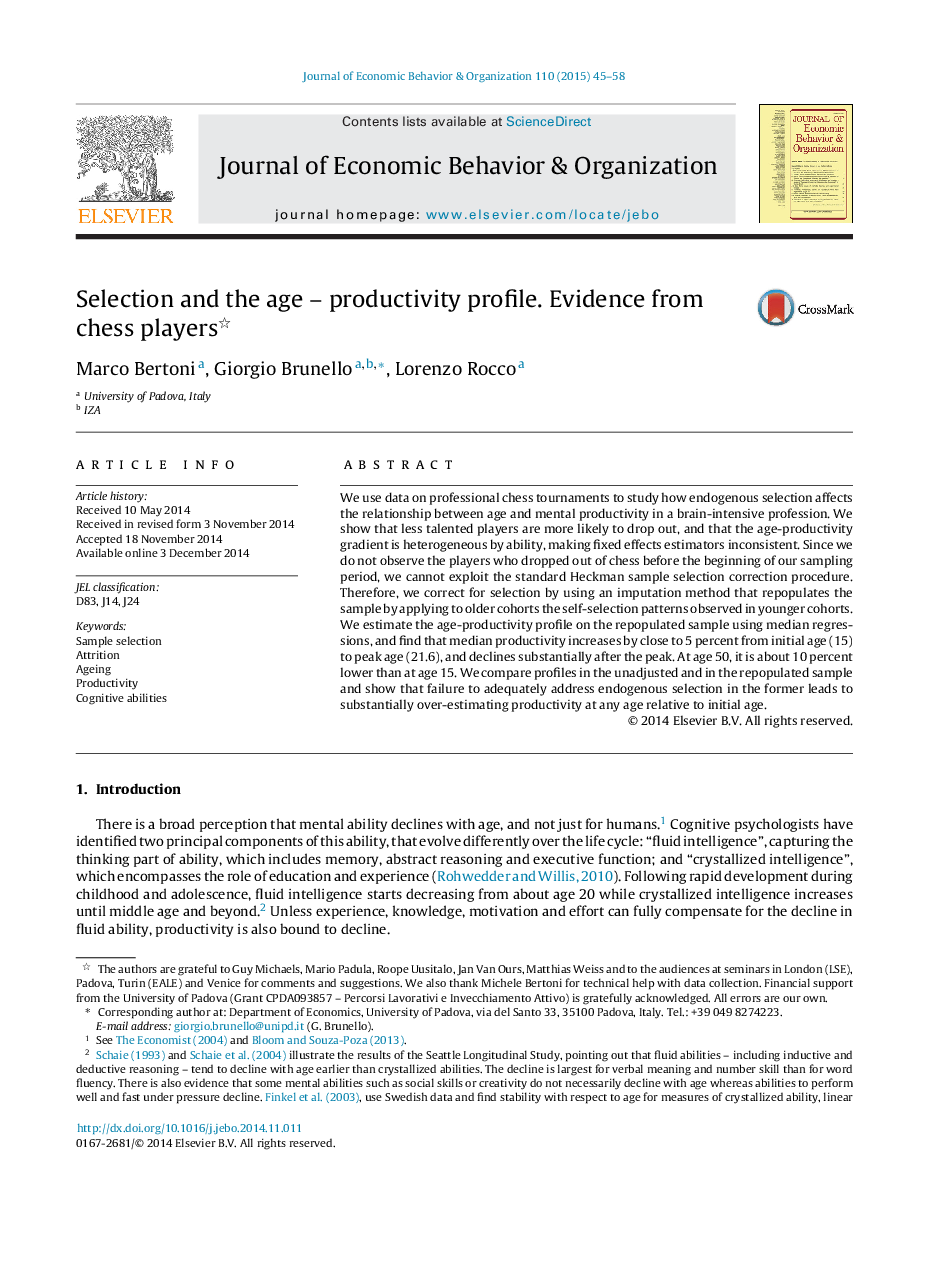| کد مقاله | کد نشریه | سال انتشار | مقاله انگلیسی | نسخه تمام متن |
|---|---|---|---|---|
| 883472 | 1471654 | 2015 | 14 صفحه PDF | دانلود رایگان |
• We study how selection affects the relationship between age and mental productivity.
• We use data on professional chess players.
• We correct for selection using an imputation procedure.
• We find that median productivity increases by close to 5 percent from initial age (15) to peak age (21), and declines substantially after the peak.
We use data on professional chess tournaments to study how endogenous selection affects the relationship between age and mental productivity in a brain-intensive profession. We show that less talented players are more likely to drop out, and that the age-productivity gradient is heterogeneous by ability, making fixed effects estimators inconsistent. Since we do not observe the players who dropped out of chess before the beginning of our sampling period, we cannot exploit the standard Heckman sample selection correction procedure. Therefore, we correct for selection by using an imputation method that repopulates the sample by applying to older cohorts the self-selection patterns observed in younger cohorts. We estimate the age-productivity profile on the repopulated sample using median regressions, and find that median productivity increases by close to 5 percent from initial age (15) to peak age (21.6), and declines substantially after the peak. At age 50, it is about 10 percent lower than at age 15. We compare profiles in the unadjusted and in the repopulated sample and show that failure to adequately address endogenous selection in the former leads to substantially over-estimating productivity at any age relative to initial age.
Journal: Journal of Economic Behavior & Organization - Volume 110, February 2015, Pages 45–58
